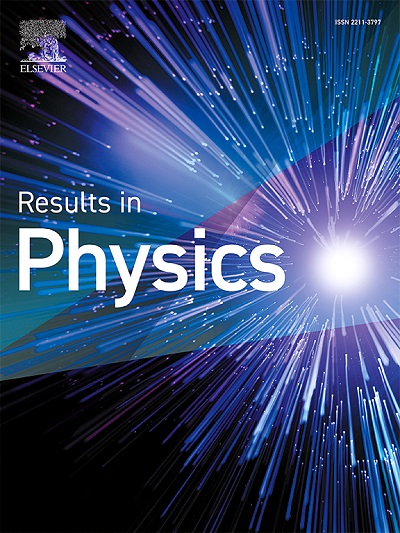Effect of oceanic turbulence on the statistical features of electromagnetic optical beam
IF 4.4
2区 物理与天体物理
Q2 MATERIALS SCIENCE, MULTIDISCIPLINARY
引用次数: 0
Abstract
This work deals with the intricate problem of electromagnetic optical beam propagation through oceanic turbulence. Using the extended Huygens–Fresnel principle, numerically, the behavior of the degree of cross-polarization (DOCP), electromagnetic degree of coherence (EMDOC), and also the newly introduced Stokes scintillation parameters are explored through the oceanic turbulence medium. In contrast to atmospheric turbulence, oceanic turbulence introduces complexity in optical beam propagation due to additional variables, such as temperature-salinity fluctuations, the energy dissipation rate, etc. We investigate the fact that during propagation through oceanic turbulence, these parameters are affected differently. The outcomes reveal that changing the coherence and polarization of the input source allows control over these parameters during propagation through oceanic turbulence. Furthermore, we observed that the oceanic turbulence factors, such as temperature fluctuations, rate of dissipation of energy, etc., significantly impact the statistical properties of the vectorial light beams. The implications of these findings are relevant in underwater communication, imaging, remote sensing, and other related applications.
海洋湍流对电磁光束统计特性的影响
本文研究了电磁光束在海洋湍流中传播的复杂问题。利用扩展的惠更斯-菲涅耳原理,在数值上探讨了交叉极化度(DOCP)、电磁相干度(EMDOC)以及新引入的Stokes闪烁参数在海洋湍流介质中的行为。与大气湍流相比,由于温度-盐度波动、能量耗散率等附加变量,海洋湍流给光束传播带来了复杂性。我们研究了在海洋湍流中传播时,这些参数受到不同影响的事实。结果表明,改变输入源的相干性和极化可以在通过海洋湍流传播过程中控制这些参数。此外,我们还观察到海洋湍流因素,如温度波动、能量耗散率等,对矢量光束的统计特性有显著影响。这些发现对水下通信、成像、遥感和其他相关应用具有重要意义。
本文章由计算机程序翻译,如有差异,请以英文原文为准。
求助全文
约1分钟内获得全文
求助全文
来源期刊

Results in Physics
MATERIALS SCIENCE, MULTIDISCIPLINARYPHYSIC-PHYSICS, MULTIDISCIPLINARY
CiteScore
8.70
自引率
9.40%
发文量
754
审稿时长
50 days
期刊介绍:
Results in Physics is an open access journal offering authors the opportunity to publish in all fundamental and interdisciplinary areas of physics, materials science, and applied physics. Papers of a theoretical, computational, and experimental nature are all welcome. Results in Physics accepts papers that are scientifically sound, technically correct and provide valuable new knowledge to the physics community. Topics such as three-dimensional flow and magnetohydrodynamics are not within the scope of Results in Physics.
Results in Physics welcomes three types of papers:
1. Full research papers
2. Microarticles: very short papers, no longer than two pages. They may consist of a single, but well-described piece of information, such as:
- Data and/or a plot plus a description
- Description of a new method or instrumentation
- Negative results
- Concept or design study
3. Letters to the Editor: Letters discussing a recent article published in Results in Physics are welcome. These are objective, constructive, or educational critiques of papers published in Results in Physics. Accepted letters will be sent to the author of the original paper for a response. Each letter and response is published together. Letters should be received within 8 weeks of the article''s publication. They should not exceed 750 words of text and 10 references.
 求助内容:
求助内容: 应助结果提醒方式:
应助结果提醒方式:


